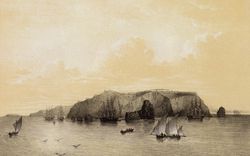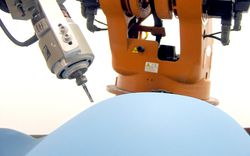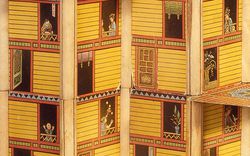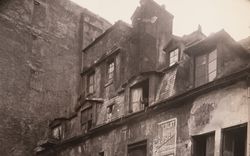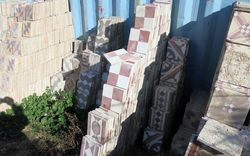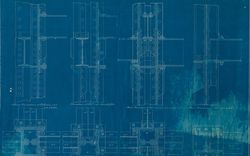The Monadnock Is Not So Simple
Text by Thomas Leslie
Chicago’s Monadnock Block is legendary for its massive brick bearing walls and its spartan, unadorned elevations. Peter and Shepherd Brooks, Boston brothers who financed several early Chicago skyscrapers, hired the architectural firm Burnham & Root in 1885, but market conditions delayed the project until 1890 and it was completely redesigned in the interim.1
-
Donald Hoffmann. “John Root’s Monadnock Building,” The Journal of the Society of Architectural Historians 26, no. 4 (December 1967): 269–277. ↩
The Monadnock is traditionally thought of as the last load-bearing masonry skyscraper, and its deep street-level walls suggest the shortcomings of such a ponderous structure. The southern end of the block, designed by Holabird & Roche between 1891 and 1892 while Burnham was occupied with the World’s Columbian Exposition, shows the contrasting advantages of steel construction—large apertures at the base bring in more light, and show off the retail wares inside.
Read more
But these working drawings show that the Monadnock is not so simple. The 1885 scheme featured cast-iron columns in the building’s interior that provided no resistance to lateral, or wind, loads. Because of its production process, tight connections could not be made in cast iron, and buildings relied on thick masonry shear walls to prevent them from swaying. Burnham & Root’s final scheme, however, came after significant progress had been made in steel production.1 In addition to thick masonry cross walls, this design featured steel portal braces that spanned the exterior walls and diagonal straps that tied the exterior walls and interior columns together.2 While contemporary buildings had more complete wind-bracing schemes, these elements show that even a “masonry” skyscraper in 1890 and 1891 contained elements that took advantage of the tensile capabilities of steel, and of steel’s ability to form stiff connections.
-
Thomas Leslie, “Built Like Bridges: Iron, Steel, and the Importance of Riveted Steel to the Nineteenth Century Skyscraper,” Journal of the Society of Architectural Historians 69, no. 2 (June, 2010): 234–261. ↩
-
Carl W. Condit, “The Wind Bracing of Buildings,” Scientific American 230, no. 2 (February 1974): 92-105. See also C. T. Purdy, “The Steel Construction of Buildings,” Bulletin of the University of Wisconsin, Engineering Series 1, no. 3 (October 1894): 41–67. ↩
These drawings show another capability of steel in the cantilevered bay windows that project from the exterior planes of the building. Such extensions were nominally designed to provide more light and air to offices within, but they also grabbed additional, rentable floor space. These bays were treated as undulations in the masonry street wall, but the framing plan shows that the floors and walls of the bays are supported by cantilevered steel beams. This construction was not new, but these cantilevered bays show the tension between the traditions of structural brick and the developing capabilities—and aesthetics—of the steel frame.
One final aspect of these drawings that is particularly revelatory is their condition. The 1885 set of cast-iron details shows a patient draftsman intent on understanding and representing every detail. The 1889 and 1890 drawings, on the other hand, show a project under immense pressure—undoubtedly caused by a desire to take advantage of the 1889 real-estate boom. These are more hastily drawn, details are added wherever space is available, and much is left to the discretion of the builder; in fact, the all-important connection of the wind-bracing straps to the structural masonry is handled with a short note that they “are to be turned up into masonry 8".” The south portion of the Burnham & Root design, a block originally known as the Kearsarge, was sliced out of the plan as the Brooks brothers wavered on the scale of their investment. Ultimately both halves were built as one, but this incision shows the speed with which such decisions were made in a heated market, and Burnham & Root’s ability to adeptly provide a response.
Thomas Leslie was here in 2010 as the recipient of a CCA Support Grant.
